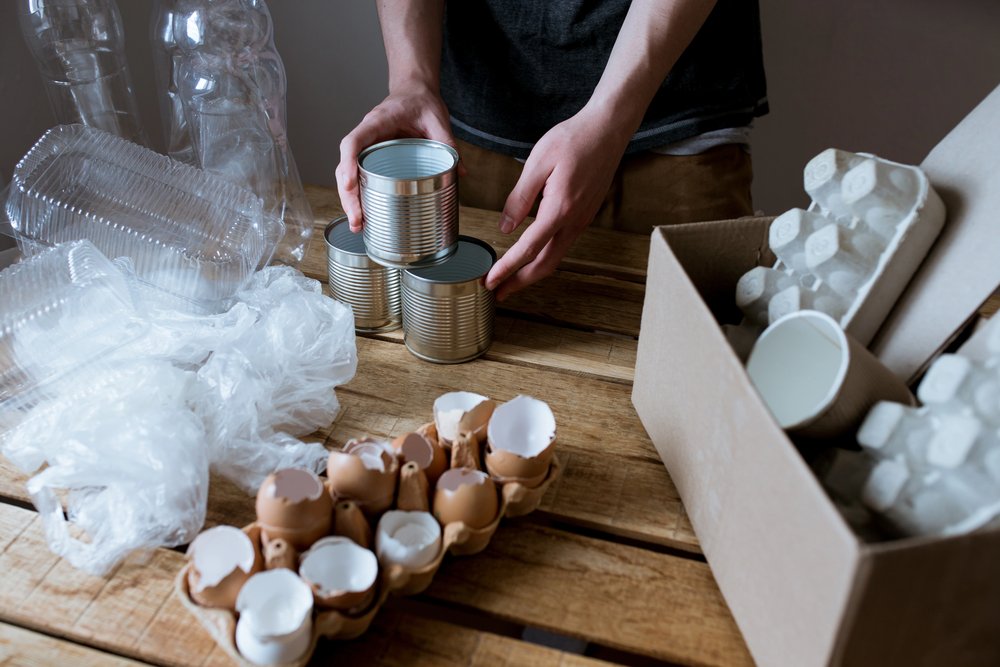
Waste sorting and recycling may be small things, but they make a gigantic difference to the health of our world and communities. When everything goes into a single bin, precious materials go into landfills, where they could take centuries to decompose and potentially release toxic chemicals. By properly sorting waste, we conserve resources, decrease pollution, and ensure that all people have a cleaner environment.

A well-thought-out sorting system is the key to success in recycling. Whether you reside in a house, apartment, or own a business, maintaining well-labeled bins for recycling, compost, and trash allows everyone to take their turn at participating. Distinguishing between the three using different colors or stickers prevents misunderstandings.

Take stock of your daily habits to determine where most of the waste is produced offices, kitchens, and shared spaces are common sources. Having bins in the right places makes all the difference in excluding recyclable and compostable materials from the landfill. The goal is to make it easy and intuitive for everyone to sort waste properly.

It’s all about knowing what goes in your recycling bin. Empty and rinse plastic bottles and containers, aluminum cans, glass bottles and jars, dry paper, newspapers, magazines, and flattened cardboard are all accepted by most curbside recycling programs. Plastic caps can typically remain on bottles, but glass jar lids need to come off.

Milk and juice cartons and dry paperboard boxes such as cereal and tissue boxes can also be recycled if clean and dry. It’s best to put recyclables loosely in the bin, never bagged, so that they can be efficiently sorted at the recycling plant. If you’re ever not sure, refer to your local recycling guide, as regulations may differ based on where you reside.

Not everything can be recycled curbside, and putting the wrong items in your bin can cause big problems at the recycling facility. Plastic bags, packaging wrap, and film should never go in your recycling bin; instead, take them to a local grocery store that accepts them.

Electronics, batteries, light bulbs, and household hazardous waste like paint, cleaners, and pesticides all require special handling and should be taken to designated drop-off centers. Other typical things to avoid placing in the recycling bin are yard trimmings, clothing, shoes, shredded paper, and polystyrene foam.

Soiled paper products, diapers, and ceramics are best discarded in the trash. Large plastics, hoses, cords, and wires do not get accepted in most curbside programs either. Improper sorting can lead to contamination, extra processing time, and reduced efficiency at recycling plants.

Certain things require special handling when disposal is involved. Computers, televisions, and household appliances should be brought to local collection centers or recycling events. Batteries, particularly rechargeable and lead-acid ones, have to be brought to hazardous waste collection facilities. Household hazardous waste such as paints, solvents, pesticides, and motor oil should never be discarded down the drain or buried in the landfill. Free drop-off days or permanent collection facilities are available through most communities for these types of materials.

Yard trimmings and food waste account for much of the household garbage, but they shouldn’t be put in the recycling can. Compost them at home instead or take advantage of your community’s organics collection program if it exists. Composting recycles food scraps and yard waste into rich soil, cutting down on landfill waste and creating healthier gardens.

If you have something that won’t go in your curbside cans, neighborhood recycling centers are where to go. Most take electronics, hazardous materials, bulky trash, and items such as foam and fabrics. Some offer special services for cooking oil, mattresses, and construction waste. Be sure to check your local center’s rules before heading out, since items accepted and hours of operation may vary. Staying informed helps you make responsible disposal choices without wasting time or causing contamination.

Creating improved recycling habits doesn’t need to be complicated. Rinse items prior to recycling, keep them dry, and don’t wish-cycle placing items in the bin hoping they will be recycled. Give items you can still use, such as clothing, books, and kitchenware, to local charities. Educate yourself and make minor adjustments to contribute to a healthier, more sustainable community, one bin at a time. Small steps, when done consistently, lead to big environmental impacts.
